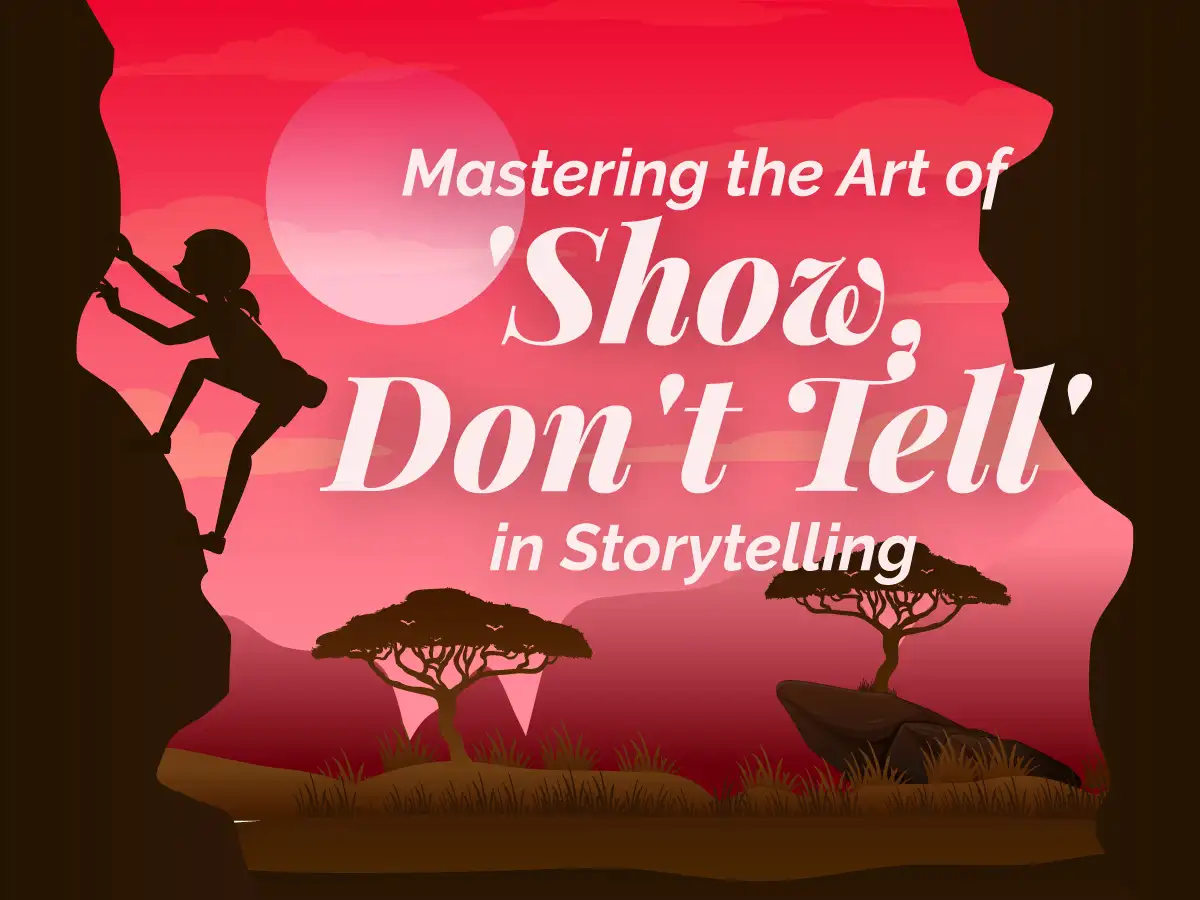“Show, don’t tell” is a piece of advice we often hear when coming to writing a storybook.
As we have seen in the previous article “The First Chapter Formula”, showing and not telling your story is an important point to succeed in your first chapter and also throughout the book. Let’s see in more detail how you can do it.
What’s the difference between “telling a story” and “showing a story”?
Telling is used when we want to inform the reader.
Showing is used when you want the reader to experience your story. You let your readers paint the scene.
Example:
“These two inseparable sisters can talk through their eyes”
“A scintilla spreads from one sister’s eyes to another and they see in each other’s eyes, bunches of trust, letting them filled with tears of joy.”
In the first one, you just know that two sisters can communicate, but in the second one you can imagine the whole scene and you understand the thick relationship between these two sisters.
Why should you show your story and not tell it?
When you tell a story, the reader just knows the piece of information and doesn’t know the real feeling of it.
Moreover, you have to give evidence throughout the details. For instance, if you say a character is beautifully dressed, it isn’t enough to prove to the reader that the clothing is beautiful. You have to give details on the material of the cloth, how it is stitched, the color, or the accessories. This way, characters are more relatable, seem more real, and your readers are more engaged with your story.
Flashbacks
You can use flashbacks to understand the internal conflict or the personality of the main character.
Example :
“Dakshita never fails to watch the sunset on a full moon from the beach, where we can see sunrays coloring the moon with pinkish shades. Even though she is exhausted searching for Aadhavan.”
“On a full moon night, Aadhavan gave her the promise ring with rose heart quartz. Since then, every time the moonlight in this pinky heart she regains the courage to never stop searching for Aahavan.“
Without the flashback, we are thinking about why Dakshita loses her time going to the beach to watch the sunset when she should be searching for Aadhavan (the internal conflict for this example). After reading the flashback, this makes sense, and how much this character needs to watch the sunset for this story.
Give strong details
It’s more convincing for the reader to show how the characters are and what they have gone through rather than using adjectives to describe them or the situation.
Example :
“She felt happy as he kissed her”
“The kiss echo ripples on her blushing cheeks, filling her eyes with a warm tear”
On the first one, I inform you that the kiss made her happy. Read the second one. Did I even use the word happy or joy? But you understand that the warm tears are tears of joy, and this particular moment was precious for her.
Senses and feelings
Use sight, touch, smell, sound, and taste of personages. This enhances the readers’ experience in the story.
Showing the emotions of the characters is an excellent way to immerse readers in the story. Showing personages’ feelings and emotions explains how important something is to them.
Example:
“The puppy melted her.”
“She dived into the froth of her hot chocolate when she saw the puppy”
In the first one, I tell you the puppy melted the girl. In the second one, I show you how the girl felt when seeing that puppy, and this is more relatable for you.
Dialogue
Dialogue is a way to convey to the readers what the characters are saying.
However, many writers use them indirectly to tell information. For instance, about the internal conflict.
Dialogue should be what the personage would speak, and the reader should understand if the character is talking with joy, irony, or sadness based on their personality.
Example :
“Aajay, I wouldn’t have more beautiful flowers when your black petals looked at me.”
Imagine, this sentence was said by a girl who loves flowers, you know now how beautiful this girl finds Aaajay’s eyelashes, to the point she can compare them to flowers.
Don’t give too complicated details
Certain things don’t need this amount of detail.
Concerning Internal thoughts of characters, it’s better to tell.
During a confrontation scene between characters or something happening fast, you don’t have time to explain, you have to tell the reader quickly.
You can now practice the “Show, don’t tell” advice in your upcoming book! Give details on aspects that can immerse readers in the story like the personality of your characters, their emotions, or what they have gone through, but do not forget you should balance between “showing” and “telling” and adding dialogues.



